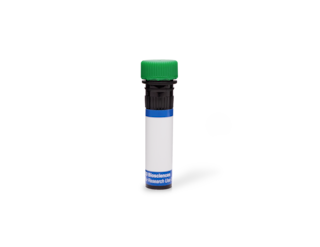-
Your selected location is
Middle East / Africa
- Change location/language
-
Reagents
- Flow Cytometry Reagents
-
Western Blotting and Molecular Reagents
- Immunoassay Reagents
-
Single-Cell Multiomics Reagents
- BD® OMICS-Guard Sample Preservation Buffer
- BD® AbSeq Assay
- BD® Single-Cell Multiplexing Kit
- BD Rhapsody™ ATAC-Seq Assays
- BD Rhapsody™ Whole Transcriptome Analysis (WTA) Amplification Kit
- BD Rhapsody™ TCR/BCR Next Multiomic Assays
- BD Rhapsody™ Targeted mRNA Kits
- BD Rhapsody™ Accessory Kits
- BD® OMICS-One Protein Panels
- BD OMICS-One™ WTA Next Assay
-
Functional Assays
-
Microscopy and Imaging Reagents
-
Cell Preparation and Separation Reagents
Old Browser
This page has been recently translated and is available in French now.
Looks like you're visiting us from {countryName}.
Would you like to stay on the current location site or be switched to your location?
BD Transduction Laboratories™ Purified Mouse Anti-ECA39
Clone 51/ECA39 (RUO)





Western blot analysis of ECA39 on HeLa lysate. Lane 1: 1:250, lane 2: 1:500, lane 3: 1:1000 dilution of ECA39.

Immunofluorescence staining of HeLa cells.




Regulatory Status Legend
Any use of products other than the permitted use without the express written authorization of Becton, Dickinson and Company is strictly prohibited.
Preparation And Storage
Product Notices
- Since applications vary, each investigator should titrate the reagent to obtain optimal results.
- Please refer to www.bdbiosciences.com/us/s/resources for technical protocols.
- Caution: Sodium azide yields highly toxic hydrazoic acid under acidic conditions. Dilute azide compounds in running water before discarding to avoid accumulation of potentially explosive deposits in plumbing.
- Source of all serum proteins is from USDA inspected abattoirs located in the United States.
Companion Products


The c-myc oncogene is important in proliferation, differentiation, apoptosis, and malignant transformation. Products of myc oncogenes are transcription factors that bind to the DNA sequence, CACGTG, and regulate the expression of multiple target genes. Several myc target genes include ECA39, p53, ornithine decarboxylase (ODC), alpha-prothymosin, and Cdc25A. There is a high degree of identity among the mouse, human, and yeast ECA39 proteins. The myc recognition binding site of ECA39 is located 3' to the start site of transcription in the mouse and human genes, but this element is absent in the nematode and yeast. Additionally, the tissue specific expression of ECA39 during embryogenesis is similar between human and mouse. Disruption of the ECA39 gene in yeast results in an increased growth rate in comparison to wild type, such that G1 is shorter. Furthermore, ECA39 is expressed in c-myc induced tumors and displays significant homology to the prokaryotic branched-chain amino acid aminotransferase (BCAT). Thus, ECA39 may be involved in the regulation of the cell cycle, possibly at the G1 to S phase transition.
Development References (4)
-
Ben-Yosef T, Yanuka O, Benvenisty N. ECA39 is regulated by c-Myc in human and by a Jun/Fos homolog, Gcn4, in yeast. Oncogene. 1996; 13(9):1859-1866. (Biology). View Reference
-
Ben-Yosef T, Yanuka O, Halle D, Benvenisty N. Involvement of Myc targets in c-myc and N-myc induced human tumors. Oncogene. 1998; 17(2):165-171. (Biology). View Reference
-
Eden A, Simchen G, Benvenisty N. Two yeast homologs of ECA39, a target for c-Myc regulation, code for cytosolic and mitochondrial branched-chain amino acid aminotransferases. J Biol Chem. 1996; 271(34):20242-20245. (Biology). View Reference
-
Schuldiner O, Eden A, Ben-Yosef T, Yanuka O, Simchen G, Benvenisty N. ECA39, a conserved gene regulated by c-Myc in mice, is involved in G1/S cell cycle regulation in yeast. 1996; 93(14):7143-7148. (Biology). View Reference
Please refer to Support Documents for Quality Certificates
Global - Refer to manufacturer's instructions for use and related User Manuals and Technical data sheets before using this products as described
Comparisons, where applicable, are made against older BD Technology, manual methods or are general performance claims. Comparisons are not made against non-BD technologies, unless otherwise noted.
For Research Use Only. Not for use in diagnostic or therapeutic procedures.